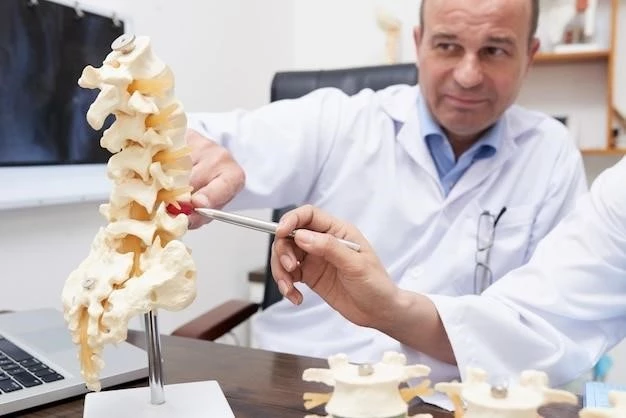Managing Cervical Medullary Canal Stenosis
Understanding the factors contributing to congenital stenosis is crucial. Possible causes include genetic predisposition, abnormal fetal development, and certain medical conditions. Seek medical advice for accurate diagnosis and personalized treatment.

Causes of Congenital Stenosis of Cervical Medullary Canal
When exploring the causes of congenital stenosis, it is vital to consider various factors. Genetic predisposition is a key player, with some individuals inheriting a narrower medullary canal from their parents. Abnormal fetal development during pregnancy can also lead to this condition, affecting the proper formation of the cervical medullary canal. Additionally, certain medical conditions or syndromes may contribute to the development of stenosis. It is essential to consult with a healthcare provider to determine the specific cause in each case.
Symptoms and Diagnosis of Cervical Medullary Canal Stenosis
Recognizing the symptoms of cervical medullary canal stenosis is crucial for prompt diagnosis and treatment. Symptoms can vary depending on the severity of the condition but commonly include neck pain, numbness or weakness in the arms and legs, coordination difficulties, and in severe cases, problems with bowel or bladder control. Seeking medical attention is essential to receive a thorough evaluation and proper diagnosis. Diagnostic tests such as MRI, CT scans, and neurological examinations can help confirm the presence of stenosis and guide the treatment plan. Early detection and diagnosis can significantly improve outcomes.
Treatment Options for Congenital Stenosis of Cervical Medullary Canal
When it comes to treating congenital stenosis of the cervical medullary canal, various options are available to alleviate symptoms and improve quality of life. Non-surgical approaches like physical therapy, medications to manage pain and inflammation, and lifestyle modifications can be beneficial for mild cases. In more severe instances, surgical interventions such as decompression surgeries or spinal fusion may be recommended to alleviate pressure on the spinal cord and nerves. The treatment plan will be tailored to each individual’s specific needs and medical condition. Consulting with a healthcare provider is crucial in determining the most suitable treatment pathway.
Surgical Procedures for Cervical Medullary Canal Stenosis
When conservative treatments are not sufficient to manage cervical medullary canal stenosis, surgical procedures may be necessary. Surgical options include laminectomy, where portions of the vertebrae are removed to relieve pressure on the spinal cord, or spinal fusion to stabilize the spine. The choice of surgery depends on the severity of the stenosis and the individual’s overall health. It is crucial to thoroughly discuss the risks, benefits, and expected outcomes with a qualified healthcare provider before proceeding with any surgical intervention. Rehabilitation and post-operative care are essential for a successful recovery.
Prognosis and Recovery from Cervical Medullary Canal Stenosis
The prognosis for individuals with cervical medullary canal stenosis can vary based on the severity of the condition, the chosen treatment approach, and individual factors. Early diagnosis and appropriate treatment often lead to better outcomes. Recovery from surgical procedures may require rehabilitation and physical therapy to regain strength and mobility. It is essential to follow post-operative care instructions diligently and attend follow-up appointments with healthcare providers. Engaging in a comprehensive recovery plan can aid in achieving optimal results and improving overall quality of life. Keep a positive mindset and stay committed to the recovery process.
Complications of Congenital Stenosis of Cervical Medullary Canal
Complications of cervical medullary canal stenosis can have a significant impact on an individual’s well-being. These may include worsening neurological symptoms, such as increased weakness, numbness, or tingling in the extremities, difficulty walking, and potential loss of bowel or bladder control. In severe cases, untreated stenosis can lead to permanent nerve damage and paralysis. It is essential to seek medical attention promptly if experiencing any new or worsening symptoms to prevent complications. Follow treatment recommendations closely to minimize the risk of long-term issues associated with cervical medullary canal stenosis.
Research Advances in Managing Cervical Medullary Canal Stenosis
Recent research in the management of cervical medullary canal stenosis has shown promising developments. Improved diagnostic techniques, such as advanced imaging technology, are enhancing early detection capabilities. Novel surgical approaches, including minimally invasive procedures and robotic-assisted surgeries, are being explored to reduce complications and improve outcomes. Additionally, ongoing studies focus on regenerative medicine techniques to repair damaged spinal tissues and promote healing. Staying informed about these research advancements can help individuals and healthcare providers make informed decisions about managing cervical medullary canal stenosis effectively.
Lifestyle Recommendations for Individuals with Cervical Medullary Canal Stenosis
Managing cervical medullary canal stenosis involves adopting a healthy lifestyle to support overall well-being. Regular low-impact exercises like swimming or walking can help improve strength and flexibility without putting excessive strain on the spine. Maintaining a balanced diet rich in nutrients and staying hydrated are essential for optimal health. Proper posture and body mechanics can prevent added stress on the neck and spine. Adequate rest and stress management techniques can also contribute to a better quality of life. Consult with healthcare providers for personalized lifestyle recommendations tailored to your specific needs.
Conclusion
In conclusion, managing cervical medullary canal stenosis requires a comprehensive approach that includes understanding the causes, recognizing symptoms early, exploring treatment options, considering surgical interventions when necessary, focusing on prognosis and recovery, addressing potential complications, staying informed about research advances, and adopting healthy lifestyle recommendations. By working closely with healthcare providers, individuals with cervical medullary canal stenosis can take proactive steps to enhance their quality of life and well-being. Remember, early intervention and a holistic approach are key to effectively managing this condition.
